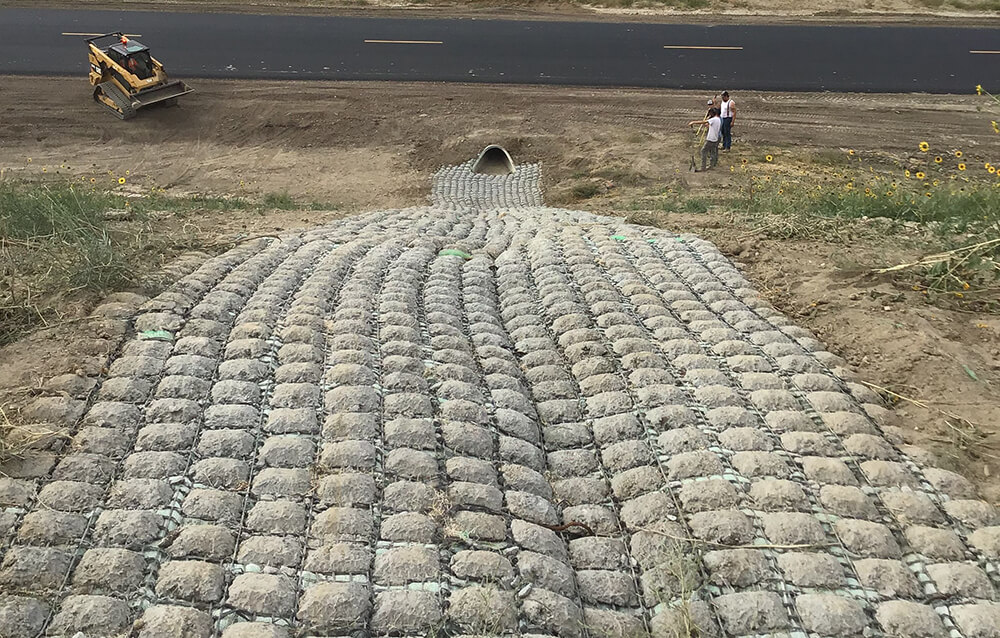Professional Solutions by Memphis Erosion Control Solutions excavation
Wiki Article
Best Practices for Disintegration Control in Building And Construction Projects
Are you dealing with a building job and concerned regarding disintegration control? Look no more! In this article, we will assist you via the best techniques for stopping erosion on your site. You'll discover 5 important techniques, effective sediment and drainage monitoring approaches, vital factors to consider for slope stabilization, and tips for protecting vegetation and dirt. We'll also delve into the value of implementing proper drainage systems. Obtain prepared to take on disintegration head-on and ensure the success of your building and construction job.5 Important Disintegration Control Strategies

To effectively control erosion on your building and construction website, you'll require to carry out necessary methods such as slope stabilization and sediment control actions. Slope stabilization is important in avoiding dirt disintegration on steep inclines. One more effective strategy is the usage of erosion control coverings or mats, which are placed on the incline and assistance keep soil bits while allowing vegetation to expand.
Effective Sediment and Drainage Administration

You can successfully handle sediment and overflow in your building project by implementing proper disintegration control actions. Debris and overflow administration is vital to protect against disintegration and secure the surrounding atmosphere. One effective measure is the installment of silt fencings along the boundary of the construction site. These fencings assist to include sediment and stop it from getting in close-by water bodies. One more essential practice is the execution of disintegration control blankets or mats. These coverings give a safety layer on bare dirt, lowering the influence of rains and stopping disintegration. In addition, making use of sediment containers or debris catches can assist to catch sediment and prevent it from entering stormwater systems. Regular upkeep of these procedures is necessary to ensure their performance throughout the building project. This consists of cleaning up and evaluating sediment containers and on a regular basis replacing silt fences and disintegration control blankets as required. By implementing these disintegration control measures, you can successfully manage sediment and drainage in your construction project, lessening the effect on the atmosphere and conforming with regulatory requirements.
Key Considerations for Slope Stabilization
You require to very carefully take a look at the slope's more information characteristics, such as its angle, drain, and structure patterns. Look for indications of erosion, such as subjected roots, splits, or down dirt.One more alternative is to plant greenery on the incline, as the roots can assist secure the soil and control disintegration. Additionally, mounting disintegration control blankets or floor coverings can provide instant defense while greenery comes to be recognized.
It's essential to regularly keep an eye on the supported slopes to guarantee their effectiveness. Watch out for any type of indicators of movement or erosion, and take instant activity if essential. Regular maintenance, such as checking and fixing any kind of damaged procedures, is additionally important to make sure lasting security.
Ideal Practices for Vegetation and Soil Security
One reliable method to shield greenery and dirt on inclines is by routinely examining for signs of erosion and taking prompt activity if required. Begin by evaluating the slope for any type of indications of disintegration, such as exposed roots, bare soil spots, or debris buildup at the bottom. Implement erosion control procedures such as mounting disintegration control blankets, mulching, or even constructing maintaining wall surfaces if required.Executing Appropriate Water Drainage Systems
When it comes to managing water flow and protecting against disintegration, comprehending these elements is important. Steeper slopes can lead to much faster water flow, increasing the threat of erosion and flooding. On the other hand, gentler inclines allow water to move a lot more slowly, reducing disintegration capacity.Dirt type also influences water drainage system style. Different dirt types have differing levels of check my site leaks in the structure, impacting how water is soaked up and drained. For circumstances, sandy soils tend to drain faster due to their rugged texture, while clay dirts have a slower drainage price due to their small nature. Understanding the dirt type aids in choosing appropriate water drainage methods, such as making use of permeable products or installing French drains. Additionally, thinking about the dirt qualities aids prevent waterlogging, which can cause inadequate plant growth and damages to frameworks.
Final Thought
In landscaping around deck final thought, when it comes to erosion control in construction tasks, you have to adhere to these best methods. Take into consideration slope stablizing approaches to make sure the stability of the website. By complying with these vital practices, you can properly manage erosion and make certain the success of your building project.To properly manage erosion on your building and construction site, you'll require to carry out important strategies such as slope stablizing and sediment control actions. Slope stablizing is vital in avoiding dirt erosion on high slopes. One more reliable method is the usage of erosion control coverings or mats, which are positioned on the incline and help maintain dirt bits while allowing greenery to grow. Another option is to grow vegetation on the slope, as the origins can help anchor the dirt and control erosion. Implement erosion control actions such as installing erosion control coverings, mulching, or also creating keeping wall surfaces if required.
Report this wiki page